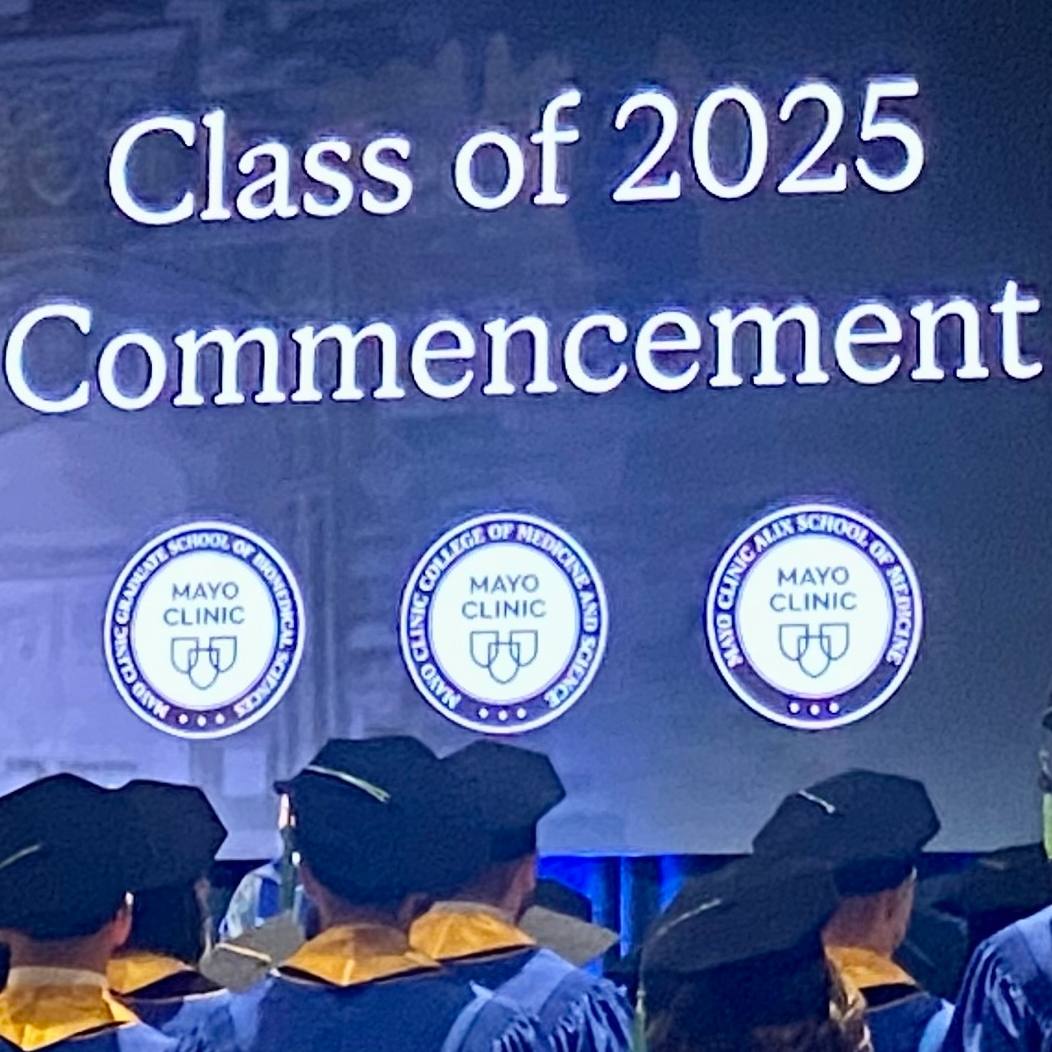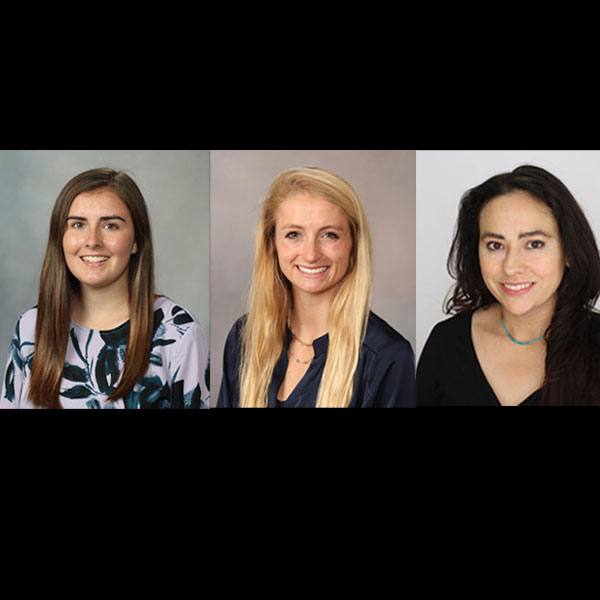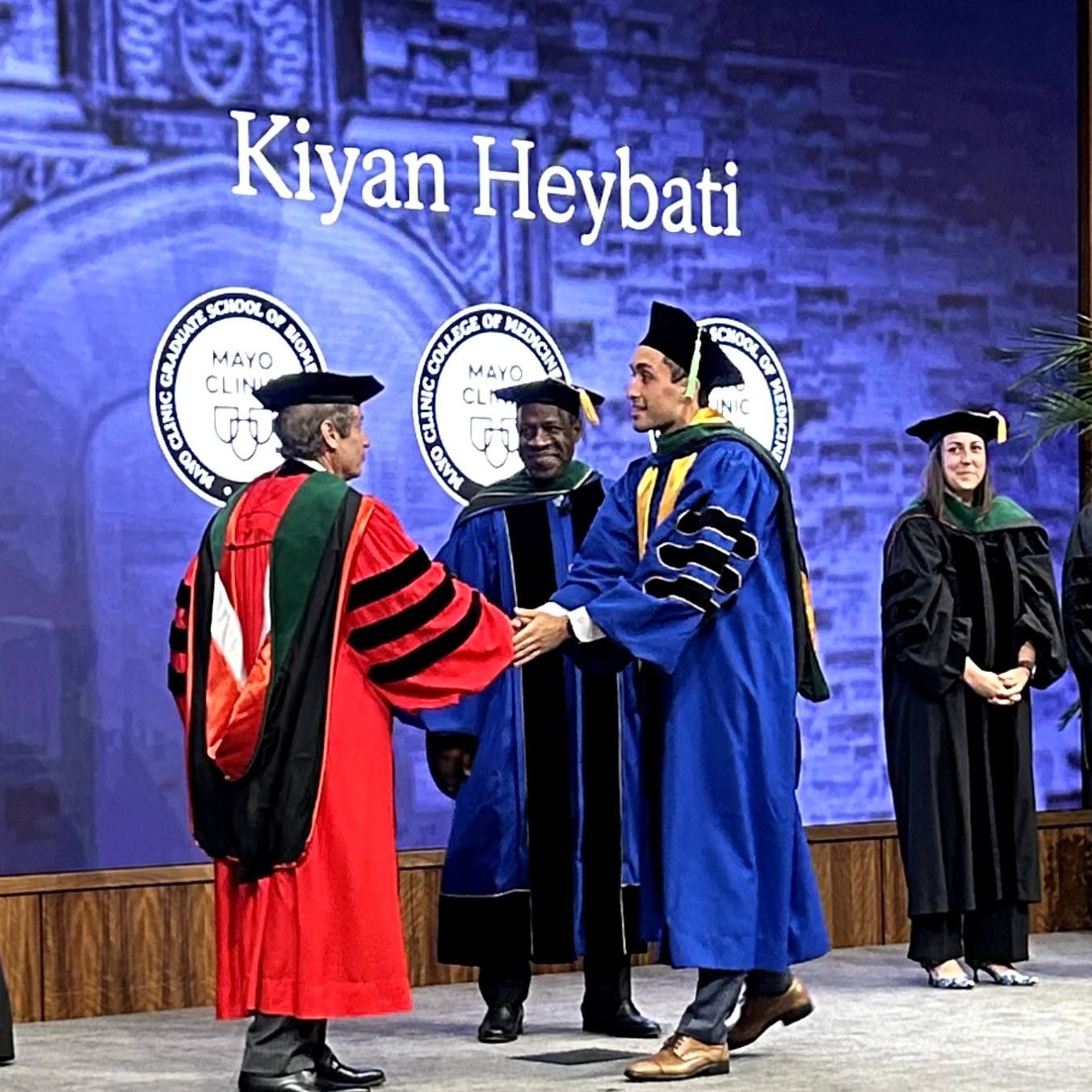-
Sharing a passion for biomedical engineering with young students
Katy Lydon was in fifth grade when she became enthralled with engineering. A team of engineers visited her classroom and led an exercise in designing, building and testing miniature towers made out of cardboard. But she didn’t associate engineering with medicine until the end of high school. "I didn't truly learn about biomedical engineering until my senior year," she says of the field that became her passion, "and I wished I'd been introduced to it earlier."

Now a third-year Ph.D. candidate at Mayo Clinic Graduate School for Biomedical Sciences, Lydon conducts research under the mentorship of orthopedic surgeon Daniel Saris, M.D., Ph.D., whose basic science lab specializes in restoring function to injured joints through cell and tissue repair, especially for knee injuries. Even as Lydon conducts experiments, she remains interested in educating others about what biomedical engineers do. So, when the National Institutes of Health announced its annual contest to introduce biomedical engineering concepts to middle schoolers, Lydon was all-in. She set out to draft a classroom plan.
"I knew it would be out of my comfort zone," she says, "but I loved that the NIH is aiming to introduce kids early to engineering — and to biomedical engineering, specifically." This month she learned the lesson plans she developed were among five national winners of the National Institute of Biomedical Imaging and Bioengineering contest — known as the Biomedical Engineering Adapted for Middle Schoolers (BEAMS) Challenge — with a $5,000 prize. Through the National Institute of Biomedical Imaging and Bioengineering, the winning lesson plans will be provided free for teachers around the country to use in their classrooms.
Connecting with kids (and keeping their attention)
As a graduate student, Lydon's research focuses on restoring a torn meniscus, a knee injury that's notoriously challenging to treat. The team in Dr. Saris' lab studies various approaches to generate new tissue for the knee and also conducts biomechanical tests to understand the durability of the engineered product. When Lydon decided to develop lesson plans for middle schoolers, she chose the topic of "biomaterials" — natural or synthesized substances that can be used to solve medical issues. Biomaterials can include the metals or ceramics used in a hip replacement or even the polymer scaffold used as a base to grow engineered tissue.
The first challenge she faced, however, was finding an approach that would make sense to young students. "The way we think as researchers is very different from the way you have to address a middle school classroom," she acknowledges. "There's so much information that goes into knowing what a biomaterial is, how it's used, what its properties are, but in this case, you need to use vocabulary middle schoolers use. And you have to keep them focused."
After packing a PowerPoint with information, Lydon realized quickly she had to pare back and share details students could engage with and retain. She worked closely with Christopher Pierret, Ph.D., assistant dean of academic affairs, who also leads the Mayo-initiated science-training program InSciEd Out that takes place in schools. Dr. Pierret encouraged Lydon to include hands-on activities for the students.
"What's exciting about the BEAMS initiative is the intent to connect classroom education to the cutting-edge of science related to biomedical engineering, but it's an initiative that's great for the entrants, too," Dr. Pierret says. "It's a fantastic opportunity for new scientists to experience curriculum-writing. Our graduate school encourages students to broaden their competencies for paths after graduation. In a short period of time, Katy learned about education practice, theory and strategy."

Lydon also met individually with two teachers from Rochester-area schools and shared her draft lesson plans. "They were honest and gave open feedback," Lydon says. "They were able to say, 'No the students won't sit for this' or 'the small groups need to be smaller.' I knew going into the meetings with them that a lot of what I'd developed was going to have to change before I had a final product. Their input was incredibly valuable."
The materials doctors use to help patients
In the first of four 45-minute lessons, Lydon's classroom plan invites students to sort different biomaterials they find in a box, identifying what the objects are made of and describing their properties. As they learn specific types of biomaterials, such as metal, ceramic or polymer, they learn how the materials are used by doctors to help patients. (Some materials make good stents, as Lydon explains, while others make good prosthetic joints.)
All along, students are prompted to think about questions such as the advantages and disadvantages of certain materials, how their properties help with their intended function and even the environmental impact of each substance. After doing short readings, sharing information in small groups and even playing a Jeopardy-style game about biomaterials, the students' learning culminates in designing a mock device out of pipe cleaners and other easily accessible items that could address a medical problem.
The two middle school teachers Lydon consulted with expressed interest in using the lesson plans. "They were very enthusiastic about trying this out," she says.
Ultimately, her participation in the contest is important for the field, and for Mayo, too, says Leigh Griffiths, MRCVS, Ph.D., dean of the graduate school. "We all play a role in sharing the importance of science, even with the youngest learners, and training the workforce of the future," he says.
For Lydon, the joy was in creating a middle school experience she wished she'd had as a kid. "It was great to think about relaying these complex topics in a way that middle schoolers can understand, whether it's dealing with a broken bone or healing a knee, and sharing how biomedical engineering can be used to solve problems that matter to all of us," she says.
—Kate Ledger







